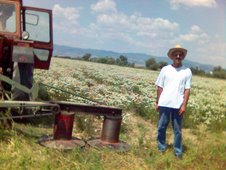Organic essential oils are derived from plants that have been grown without the use of pesticides, on land that has been certified by an authorised regulatory agent such as ECOCERT or the Soil Association.
Today, many aromatherapists and nurses prefer to use organic essential oils in their clinical treatments because they believe they have more healing power and vitality than conventional essential oils. There is also the issue of pesticide residues to be considered too, since they have far-reaching effects for both the environment, and our bodies.
Every one of our Organic Essential Oils has been analytically tested for purity and certified under one of the following official regulatory agencies:
- The Soil Association
- Nature et Progres
- ECOCERT
- Qualite-France SA
- Agrobio
Quinessence organic essential oils bring you unrivalled value for money because in most instances we have purchase them directly from the farms where they are produced, thereby cutting out the middle-man. We then pass these savings along to you, and in many cases our organic essential oils are not a great deal more expensive than many of our conventionally produced essential oils.
Further to the organic essential oils we purchase from around the world, an increasing selection of our Certified Organic essential oils are now distilled on-site from medicinal herbs and plants that have been grown for Quinessence on a 500 acre farm in the United Kingdom.
Whilst our preference is for organically produced essential oils, we do accept that it has yet to be proven scientifically they are any more effective than their conventionally produced counterparts. But even if it was proven there is no difference between them, we would still not change our view on this matter. There is much more to this subject than just efficacy.
By purchasing organic essential oils from growers who use traditional farming practices, we are all contributing towards a more sustainable ecological environment for the future. Surely this is a sensible and worthwhile investment for our forthcoming generations?
A large amount of agricultural land has already been lost due to soil erosion, and in many places the overuse of aggressive agrochemicals has destroyed the delicate balance between wildlife and its natural habitat.
Discover more about the sources of Quinessence organic pure essential oils and the importance of buying organic by browsing other pages under this category.


